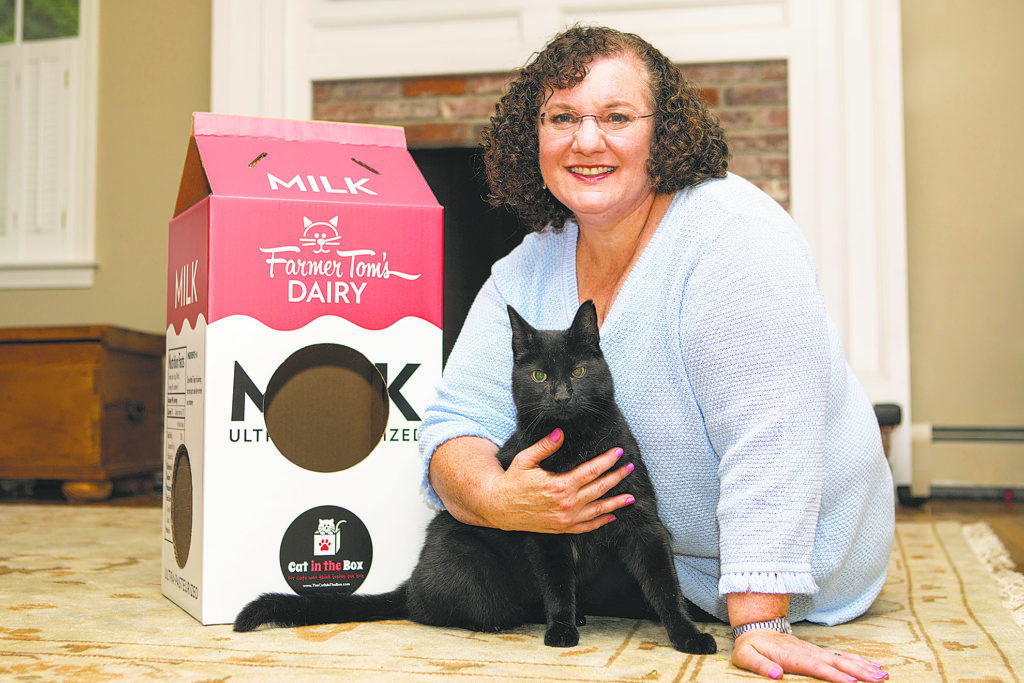
(Courtesy photo)
April is national Pet Month, and what better way to show our four-legged friends our love then keeping them safe at home. The American Humane Association estimates more than 10 million dogs and cats are lost or stolen in the U.S. every year. That is one out of every three pets.
Microchipping is the most effective way to have a lost pet returned home. A 2009 Ohio State University study revealed in three out of four cases animal shelters were able to return lost pets to their owners if the animals were microchipped. The return-to-owner rate for microchipped dogs is more than 52 percent better than their non-chipped counterparts, while for cats it’s 38 percent better.
Whether your pet is young or old, it is never too late to get microchipped. To get the facts about this important tracking technology, we spoke with Dawn LaFontaine, founder of Cat in the Box, whose pet-related expertise has appeared on NBC News, U.S. News and World Report and Reader’s Digest.
 What is a microchip?
What is a microchip?
 A microchip is a radio-frequency identification transponder (RFID). It’s made of a few electronic parts within a tiny bio-glass capsule (about the size of a grain of rice) that is inserted beneath a cat’s skin. It stores a unique number that corresponds, in a database, to a pet-owner’s contact information. It does not contain that contact information. Nor does it contain a GPS device, so a pet can not be tracked.
A microchip is a radio-frequency identification transponder (RFID). It’s made of a few electronic parts within a tiny bio-glass capsule (about the size of a grain of rice) that is inserted beneath a cat’s skin. It stores a unique number that corresponds, in a database, to a pet-owner’s contact information. It does not contain that contact information. Nor does it contain a GPS device, so a pet can not be tracked.
 How does a microchip help you find your lost pet?
How does a microchip help you find your lost pet?
 A lost pet is reconnected with its owner when it is brought to a shelter or veterinary hospital. The shelter or hospital will move a scanner across the pet’s skin. The microchip emits a radio frequency signal that is picked up by the scanner, revealing the pet’s unique ID number. The microchip company is then called and, using that ID number which is associated with the pet owner’s contact information in a database, the pet’s family can be located.
A lost pet is reconnected with its owner when it is brought to a shelter or veterinary hospital. The shelter or hospital will move a scanner across the pet’s skin. The microchip emits a radio frequency signal that is picked up by the scanner, revealing the pet’s unique ID number. The microchip company is then called and, using that ID number which is associated with the pet owner’s contact information in a database, the pet’s family can be located.
 Why isn’t a collar with tags just as helpful as a microchip?
Why isn’t a collar with tags just as helpful as a microchip?
 A collar with tags can become separated from the pet. A microchip is inserted beneath a cat’s skin and thus can never be lost.
A collar with tags can become separated from the pet. A microchip is inserted beneath a cat’s skin and thus can never be lost.
 Is microchipping painful?
Is microchipping painful?
 A syringe is used to insert the glass capsule in the skin between the shoulder blades. It causes a pinch that is probably comparable to having blood drawn. It is a very quick procedure and no anesthesia is used.
A syringe is used to insert the glass capsule in the skin between the shoulder blades. It causes a pinch that is probably comparable to having blood drawn. It is a very quick procedure and no anesthesia is used.
 Are there any side effects?
Are there any side effects?
 Occasionally, a chip will migrate to another part of the cat’s body. You should have your cat scanned by your veterinarian during a regular office visit to confirm the microchip’s location. If it does move, it is possible to have a second microchip inserted.
Occasionally, a chip will migrate to another part of the cat’s body. You should have your cat scanned by your veterinarian during a regular office visit to confirm the microchip’s location. If it does move, it is possible to have a second microchip inserted.
 What is the estimated cost of microchipping?
What is the estimated cost of microchipping?
 The price varies considerably, as does veterinary hospital policy. More typically, vets charge $50-60 to have the service provided by a vet tech or veterinary nurse, which is included in that cost.
The price varies considerably, as does veterinary hospital policy. More typically, vets charge $50-60 to have the service provided by a vet tech or veterinary nurse, which is included in that cost.
 What happens if my pet and I move? Can the address be changed?
What happens if my pet and I move? Can the address be changed?
 If you are moving, you need only update your contact information with the chip registry. Many services allow you to do this at no cost.
If you are moving, you need only update your contact information with the chip registry. Many services allow you to do this at no cost.
 Do microchips need to be replaced after a certain amount of time.
Do microchips need to be replaced after a certain amount of time.
 Microchips have no batteries or moving parts. They are designed to last for a pet’s lifetime.
Microchips have no batteries or moving parts. They are designed to last for a pet’s lifetime.



















